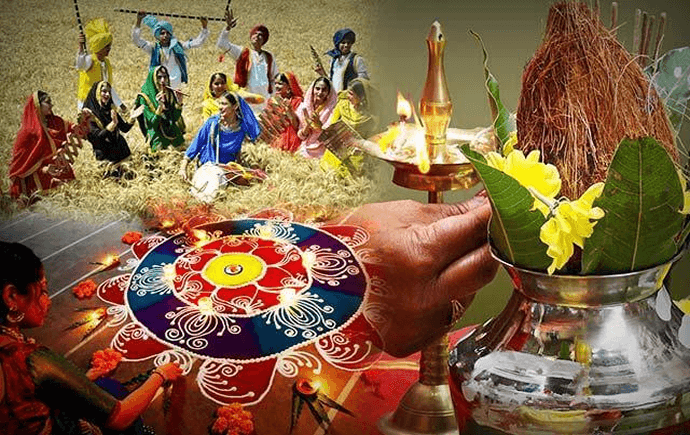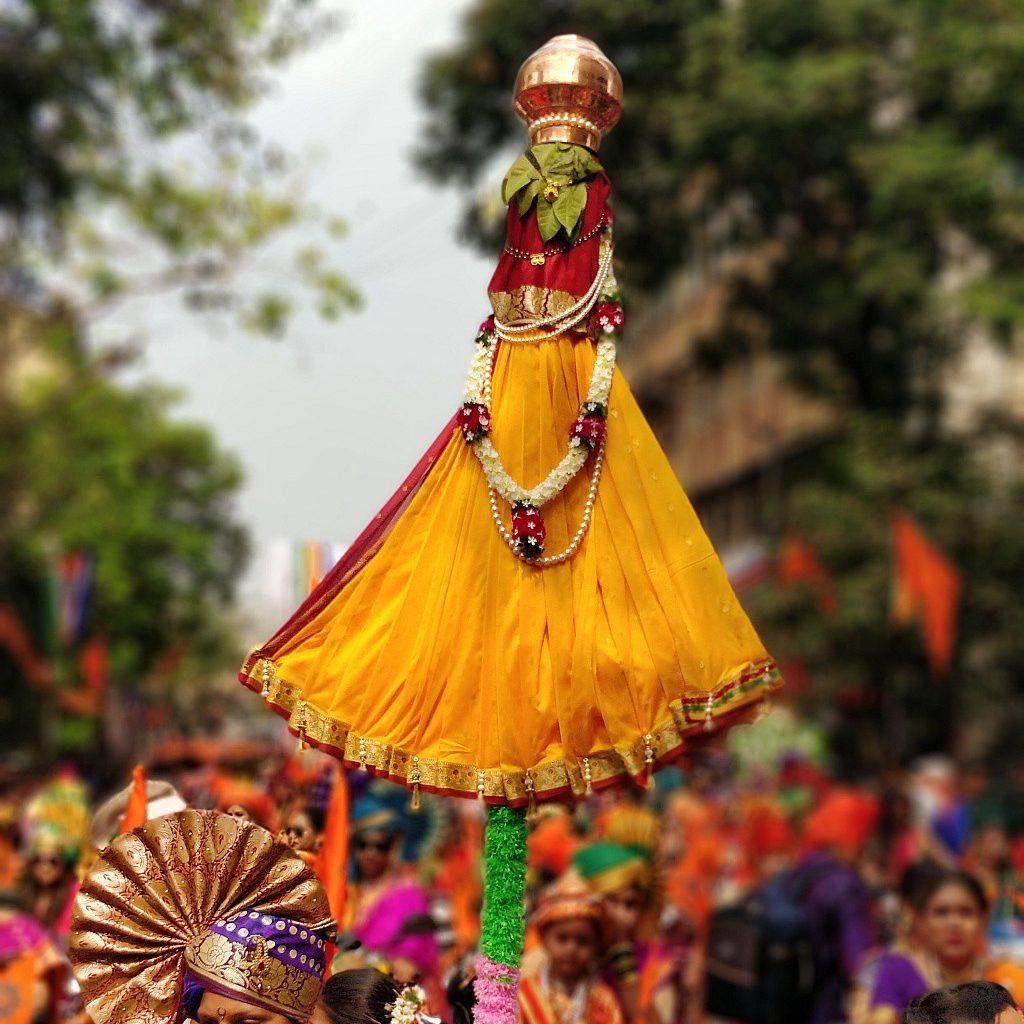By Shriya Tandon

India is indeed a land of sublime diversity. People’s cultures, religions, languages and the ways of life vary quite distinctively as we move from one cardinal direction in the country to another. This heterogeneity brings with itself the celebration of a multiplicity of festivals. In addition to that, since a vast majority of India’s population is Hindu, the use of Panchanga or the Hindu calendar, for setting dates for the festivities forms an integral part of the Indian culture. Since the Panchanga is lunisolar in nature, the dates of festivals vary greatly and so do the celebrations of New Year for all those people who are extremely invested in this Hindu calendar.
‘Gudi Padva’ is the name given to the day ushering the people of Maharashtra into a New Year. It is the first day of Chaitra month according to the Lunisolar Hindu Calendar. The word ‘Padva’ finds its roots in the Sanskrit language and literally means ‘the very next day after the moon’. The legend goes, that on this day Lord Rama returned to his birthplace, Ayodhya, after vanquishing Ravana. Therefore, in its essence, it commemorates the resounding victory of good over evil. In addition to that, Gudi Padva also heralds the onset of the reaping season and so, it is also celebrated as a festival of harvest. A Gudi flag is also made with a stick and an upturned silver or copper pitcher pot at its top, symbolizing victory. It is further decorated with a silk sari, flower garlands, sugar and turmeric which symbolize luxury, well-being, sweetness in life and good luck, respectively. At the time when the Maratha expansion was at its peak and the empire stretched from Orissa to Sindh, women began worshipping the Gudi which was then made with a bamboo stick with the sari making it symbolic to the Maratha flag. This was essentially done to signify their might. The idea holds true among the people that worshipping Gudi attracts prosperity and good luck while fending off the evil.

During the festival, spring is believed to be in full swing and the acts of celebration are a clear manifestation of people’s enthusiasm. The Maharashtrian people clean their houses, decorate them and make rangolis with flowers, colors, ingredients, etc. Gudi Padva requires preparation of a variety of festive food items like Shrikhand and Puri, Sakkar Bhaat, Puran Poli and a sweet that is a mixture of neem and jaggery to represent the bittersweet life – a life blended with both happiness and sorrow. In a tradition that has a striking resemblance with Dhanteras in North India, the buying of gold or anything new is considered auspicious. In fact, even for kick-starting a new business, Gudi Padva is regarded as a propitious day and people look forward to starting their businesses on such an auspicious occasion.
In other states like Andhra Pradesh, Telangana and Karnataka, this very New Year is known as Ugadi or Yugadi. These words again have their origins in the Sanskrit language – the Sanskrit word ‘Yuga’ which means age and another Sanskrit word ‘Adi’ which means starting – are both put together to symbolize the ‘beginning of a new age’. The saga attached to the celebration of Ugadi holds the idea that on this very day, Lord Brahma began with this expansive enterprise of creating the Universe. This day also marks the beginning of the nine-day long festival of Chaitra Navratri which ends on Ram Navmi.
Inhabiting a country like India attunes us to its incredible diversity. However, people often fail to acknowledge the richness of India’s vibrant culture. In January itself, a multiplicity of festivals were celebrated – Bihu in East, Pongal in the South and Makar Sankranti in the North, that too on the same day, without us realizing it all. It is thus, through our exposure to these festivities or merely by reading about them that we realize how much cultural richness does the Indian society encapsulates and how much of it we actually fail to recognize. The garb of the Western modernity which ‘others’ the East’s sense of identity, often prevents people from noticing important and diverse aspects of Asian cultures. It often situates itself as intrinsically ‘superior’ and ‘dominant’ thereby presenting the Indian culture as inferior, premised on ritualistic and superstitious beliefs. However, it is time we change this. It is time for the richness of the Indian culture to attack the idea of a single New Year, the idea which has been perpetuated as a dominant discourse for all these years. India’s culture deserves a new discourse, one which allows itself to be represented in all its varied forms, not by the West, but by the narrative of the East itself.

